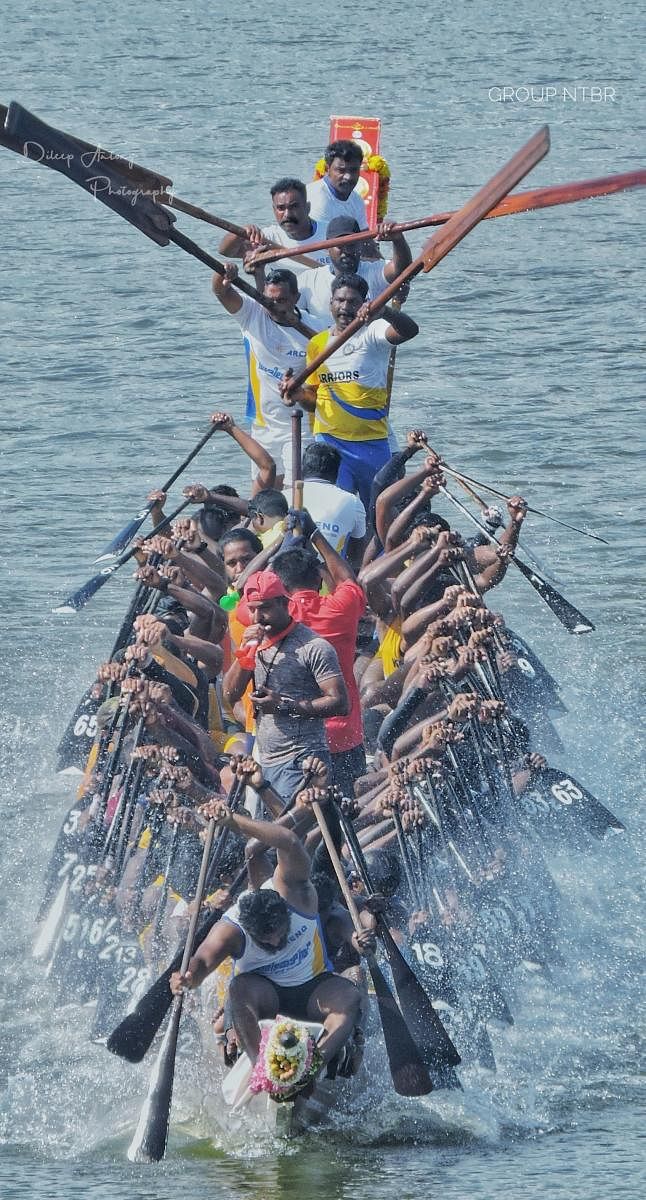
The backwaters of Kerala are again witnessing the splashes of paddles and rhythms of ‘vanchipattu’ songs as snake boat races resume with full vigour after a Covid-hit two-year break.
Beginning with the Nehru trophy on the Punnamada lake of Alappuzha district today and ending with the President’s trophy at Ashtamudi lake on November 1, the over-a-dozen popular snake boat races of Kerala could not cheer up the domestic and international crowds during the last two years owing to Covid restrictions.
The snake boats of Kerala, which originated in the 13th century as ‘Chundan Vallam’ (war boats) of the then princely rulers, have emerged as a major sporting event in Kerala since the 1950s after the then Prime Minister Jawaharlal Nehru came down to witness the snake boat race at Punnamada lake in 1952 and presented the rolling trophy, now popularly known as the Nehru trophy. A tourism surge followed; the introduction of the Champions Boat League competition by the Kerala Tourism department in 2019 linking 12 major boat races of the state has added more colour and vigour to the boat races with more sponsorships coming in and prize money to the tune of Rs 5.9 crore.
Boat races have now become a show of strength and pride of boat clubs and snake boats of various regions of Kuttanad in Alappuzha rather than a race to clinch the trophy and cash prizes.
Each snake boat, with a length extending up to around 140 feet, carries the titles of various regions like Nedumbhagom, Payippadam and Karichal of Kuttanad of Alappuzha. There are usually 80 to 100 rowers and five to ten rhythmers in each boat, making it a sporting event with the largest teams.
While it takes hardly five minutes for a snake boat to finish the 1,000-1,400-metre racing track, the preparations for the race are a year-long affair starting with the selection of best-performing snake boats and rowers to a month-long intense residential training towards the end. Rowers remain cut off from their families for the last three to four weeks and have to quit all unhealthy habits. The money being spent by each team is above Rs 50 lakh, which is pooled from contributions and sponsorships.
Preparations for each race begin during the boat race of the previous year. The boat club authorities keenly observe the performance of each snake boat. Boats that perform well fetch more demand for the next season and earn more revenue for the owners. Well-performing boats even fetch a rent of up to Rs 40 lakh or even more for a season. Snake boats are made mainly using wild jack tree wood and the manufacturing cost goes beyond Rs 75 lakh.
Apart from the snake boats, rowers who perform well in each race also get a better offer from other clubs for the next year. While the majority of the rowers are locals, trained rowers from other states as well as the Navy and the Army are also roped in by the boat clubs.
The most crucial phase of the preparations is the nearly month-long residential camp for the 100-odd rowers.
Strict training
As I walked into one such training camp in Alappuzha, many eagle eyes literally bored through me and I was stopped from proceeding further till I could prove my identity. “Outsiders are strictly prohibited at the camps. The chances of other teams sabotaging the training of rival boat clubs cannot be ruled out. Hence such a vigil is maintained,” said Rocha C Mathew, trainer of Punnamada Boat Club, which is participating in the snake boat race with the ‘Viyyapuram’ snake boat this time.
The routines begin with a wake-up call at 5.30 am and it’s lights out at 10 pm. “Rowers are not even allowed to use mobile phones after 10 pm as they should be getting proper sleep,” said Rocho.
Daily training is conducted in two sessions — morning and afternoon. Prayers, ground exercises, rowing training, daily team meetings to review performance and motivational programmes are the key components. All camps also have kitchens attached to them. A healthy diet rich in vegetables, chicken and fish is provided to the rowers. Doctors are made available to ensure the fitness of the rowers, says the team coordinator Basil Joseph. Smoking, drinking and other addictions are strictly prohibited at camps, he added.
Mathew, who has been into boat racing for nearly two decades, said there were even instances of rowers quitting such habits forever after getting involved in the camps. While lamenting that snake boat races and their participants were not getting adequate government support compared to the popularity the event has, Rocha, who is a holder of nine international medals in various water sports, is quite delighted that the snake boat races continue to motivate many to take up water sports.
The snake boat race also marks the beginning of the Onam festival celebrations of Kerala and is considered an event that highlights the syncretic nature of the state as people participate in it cutting across caste and creed.